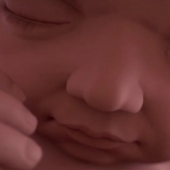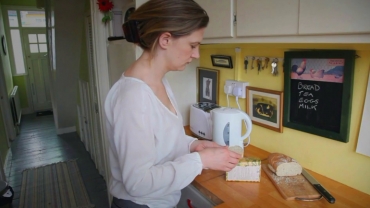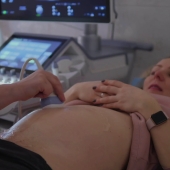Ultrasound scan is currently considered to be a safe, non-invasive, accurate and cost-effective investigation in the fetus. It has progressively become an indispensible obstetric tool and plays an important role in the care of every pregnant woman.
Both 3D and 4D scans are considered just as safe as a 2D scan, because the image is made up of sections of two-dimensional images converted into a picture.
With 3D and 4D scans, you have the benefit of seeing your baby's skin covering her internal organs. You may also get to see the shape of your baby’s mouth and nose, or see her yawn or stick her tongue out.
About video: Find out what your baby looks like every week of pregnancy and watch Emily have a 2D pregnancy scan, a 3D pregnancy scan and a 4D pregnancy scan. We'd love to hear about your pregnancy, leave us a comment below.
Thanks to our friends at Window to the Womb for supplying the scan footage and for showing Emily the process of scans and the differences between 2D, 3D and 4D scans. Did you spot the Window to the Womb Heartbeat Bear too?
Doppler Ultrasound: The doppler shift principle has been used for a long time in fetal heart rate detectors. Further developments in doppler ultrasound technology in recent years have enabled a great expansion in its application in Obstetrics, particularly in the area of assessing and monitoring the well-being of the fetus, its progression in the face of intrauterine growth restriction, and the diagnosis of cardiac malformations.3-D and 4-D Ultrasound: 3-D ultrasound can furnish us with a 3 dimensional image of what we are scanning. The transducer takes a series of images, thin slices, of the subject, and the computer processes these images and presents them as a 3 dimensional image. Using computer controls, the operator can obtain views that might not be available using ordinary 2-D ultrasound scan.3-dimensional ultrasound is quickly moving out of the research and development stages and is now widely employed in a clinical setting. It too, is very much in the News. Faster and more advanced commercial models are coming into the market. The scans requires special probes and software to accumulate and render the images, and the rendering time has been reduced from minutes to fractions of a seconds.
- 117 views













